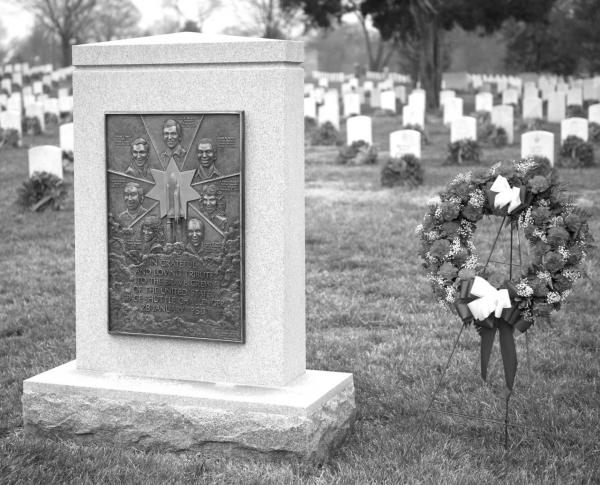Where were you at 11:38 a.m. on Jan. 28, 1986
As a bit of background, I was a proud supporter of NASA and our space program. No, I didn’t have dreams of becoming an astronaut -- not when I couldn’t summon the courage to ride the roller coaster at the State Fair. Not when I couldn’t ride the Tilt-A-Whirl with my friends without punctuating each ride with a rush to the restroom so I could throw up in privacy.
Instead, I loyally followed each step of the U.S. space race from the stability of a couch in our den…and truly empathize when the returning capsule landed in the ocean, bobbing up and down, side to side. I was sure the astronaut aboard was seasick.
When Neil Armstrong was taking his “one small step” in 1969, I watched breathlessly, having called in sick at work so I wouldn’t miss the smallest detail of the landing, space walk and then (fingers crossed) the lift-off so the rocket could head back home to Mother Earth.
But, by January 1986, life was different. Our family had grown. The country had changed and its attitude toward space exploration. I mean, can you really top walking on the moon? Weren’t we there before the Russians?
Anyway, by that morning in late January, space launches had become commonplace…sort of like “been there, done that, been to Space Camp.”
Five years earlier, the space shuttle program was introduced, and NASA scientists were working on rockets that could be reused. But, as far as more flights were concerned, well -- America had taken on a “nothing to see here” attitude, from the media to its readers and viewers.
So, instead of being glued to the TV with anticipation that morning at 11:38 a.m. I was dutifully pushing my grocery cart down the peanut butter aisle at the neighborhood Albertson’s. I had rounded the corner of the potato chip shelves when I heard a groan and cries from the front of the store.
At first, I thought, someone had suffered a heart attack over their grocery bill, but as I literally ran, pushing my cart, to the front of the store, I encountered a frozen knot of people, craning their necks to see the large TV at the front of the store… and, as newsrooms are prone to do, we saw, over and over, the sliver of video showing the gleaming white Challenger rocket and orbiter surging toward the heavens and then, exploding.
At that moment, my stomach dropped. An overwhelming grief overtook me. I was sad, scared, sorry and helpless, all at the same time. I mean, this was not NASA’s first rodeo. What had gone wrong? Who hadn’t done their due diligence? How could this happen?
There were no easy answers. All we knew as viewers was that, for the first time in history, NASA had lost a crew while the nation was watching in horror as the crew died instantly, a crew that included Payload Specialist Christa McAuliffe, a schoolteacher and mother of two chosen to fly as part of NASA’s Teacher in Space program. As a civilian, she was proof that space was now open to average Americans.
In the good, ole days before cell phones, I had to check out the groceries, load them into my car and dash home so I could turn on the TV and call my husband. In retrospect, however, I wonder what I thought calling my not-a-handyman husband would accomplish. He, I would momentarily forget, knew nothing about anything mechanical as witnessed by our portfolio of repair bills for anything with moving parts.
For days, we watched the explosion, followed by all manner of dignitaries offering their, you know, thoughts and etc.
Then, over the following months, the public learned a new vocabulary, including words like O-rings, the Rogers Commission, solid rocket booster…and a company name, the O-ring supplier--Morton Thiokol.
The explanation: There was a leak in the booster. A small puff of black smoke from the bottom of the right solid rocket booster vanished in moments, followed seconds later by an orange flame. It was 66 seconds into launch. The flame was being forced toward the big orange fuel tank as the rocket soared skyward.
A mere seven seconds later, the right booster crashed into the liquid oxygen tank. The gaseous contents of both mixed instantaneously, causing an explosion. Challenger was 73 seconds into launch.
A faulty O-ring was the cause of the leak. It was known to be sensitive to cold and could only work as expected in temperatures above 53 degrees. Exposed to near freezing temperatures, as it was that day, the tiny O-ring lost elasticity and, therefore, wasn’t able to expand. Thus, the leak occurred.
The orbiter’s capsule was found, two months after the disaster, off Cape Canaveral on the ocean floor, and the identifiable remains of the crew were returned to their families on April 29, 1986.
All recovered non-organic debris from Challenger was ultimately buried in a former missile silo at Cape Canaveral Air Force Station Launch Complex 31. A pair of 10,000- pound concrete caps were placed over the Minuteman silos, leaving nearly 125 tons of mangled metal in an impenetrable grave.
On May 20, 1986, the commingled cremated remains of the seven Challenger astronauts were buried at Arlington National Cemetery with full military honors. Two also have individual gravesites: Lt. Col. Francis R. "Dick" Scobee and Commander Michael J. Smith.
Family members and NASA erected the Challenger Memorial, near the cemetery’s Memorial Amphitheater. Approximately 400 people attended the dedication on March 21, 1987, including Vice President and Mrs. George Bush.
The astronauts' faces and names are carved into the memorial marker: Commander Michael J. Smith; Commander Francis R. 'Dick' Scobee; Ronald E. McNair, mission specialist; Ellison Onizuka, mission specialist; S. Christa McAuliffe, payload specialist; Gregory B. Jarvis, payload specialist; Judith A. Resnik, mission specialist.
Where were you, January 28, 1986? Do you remember?



